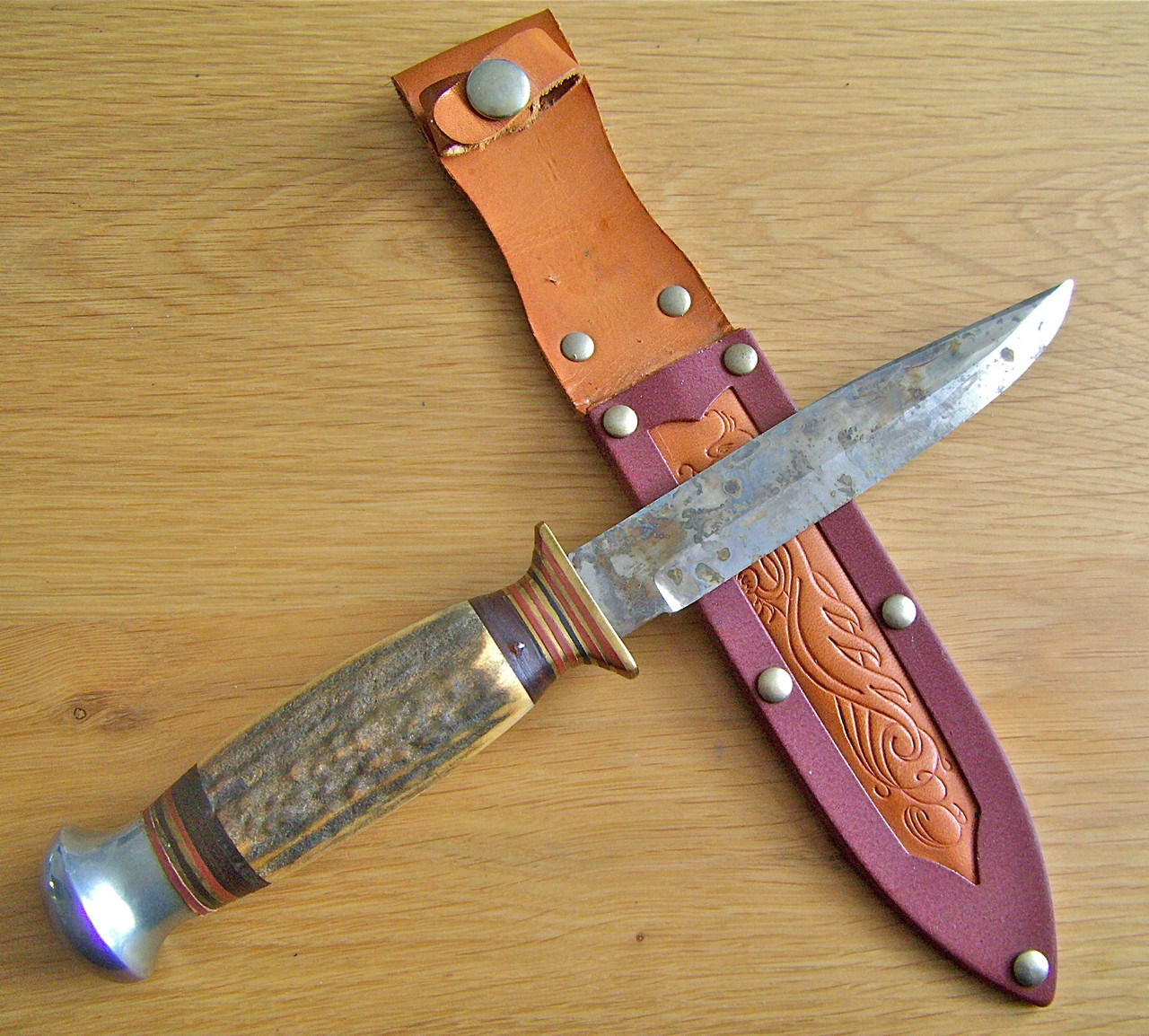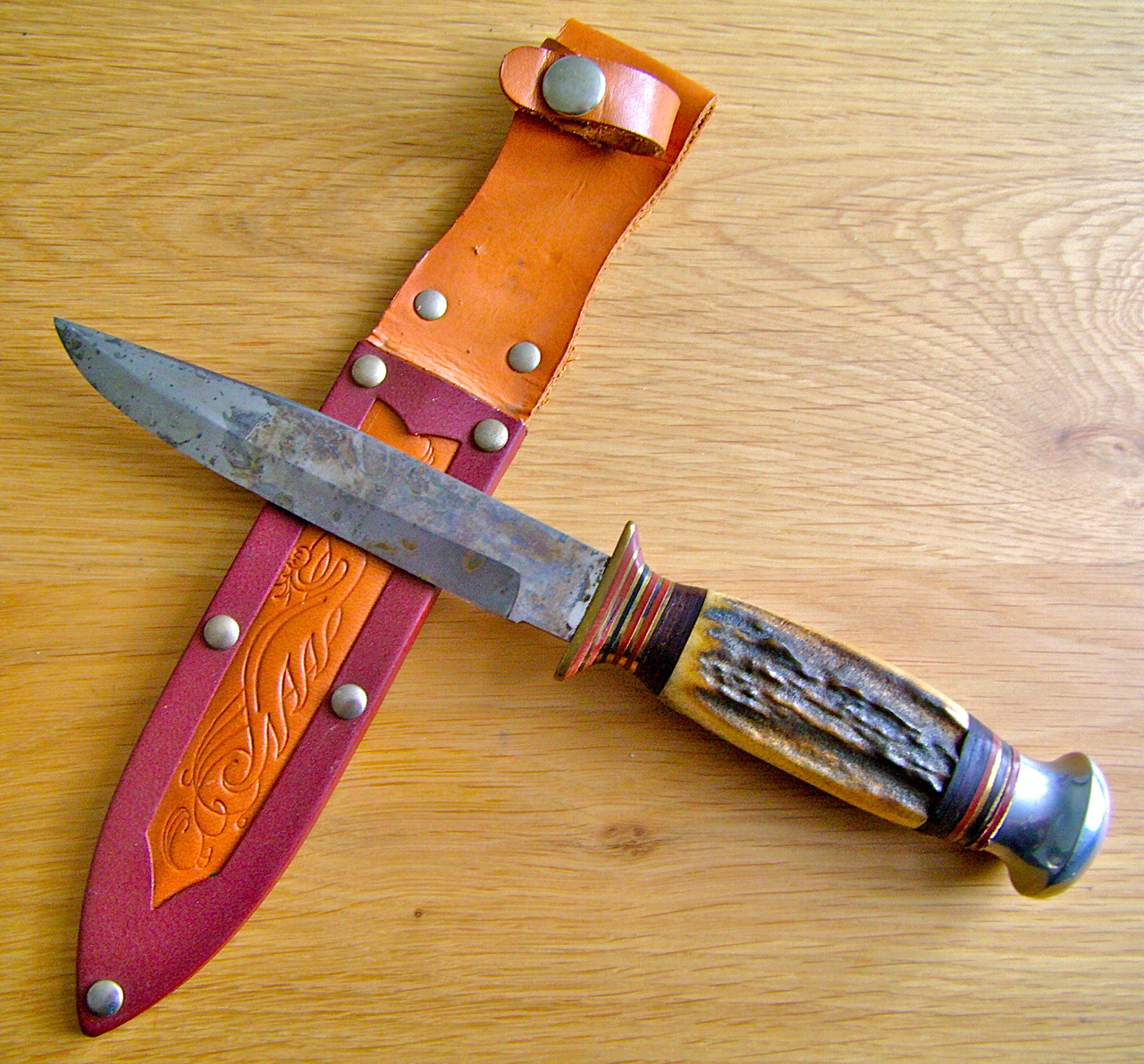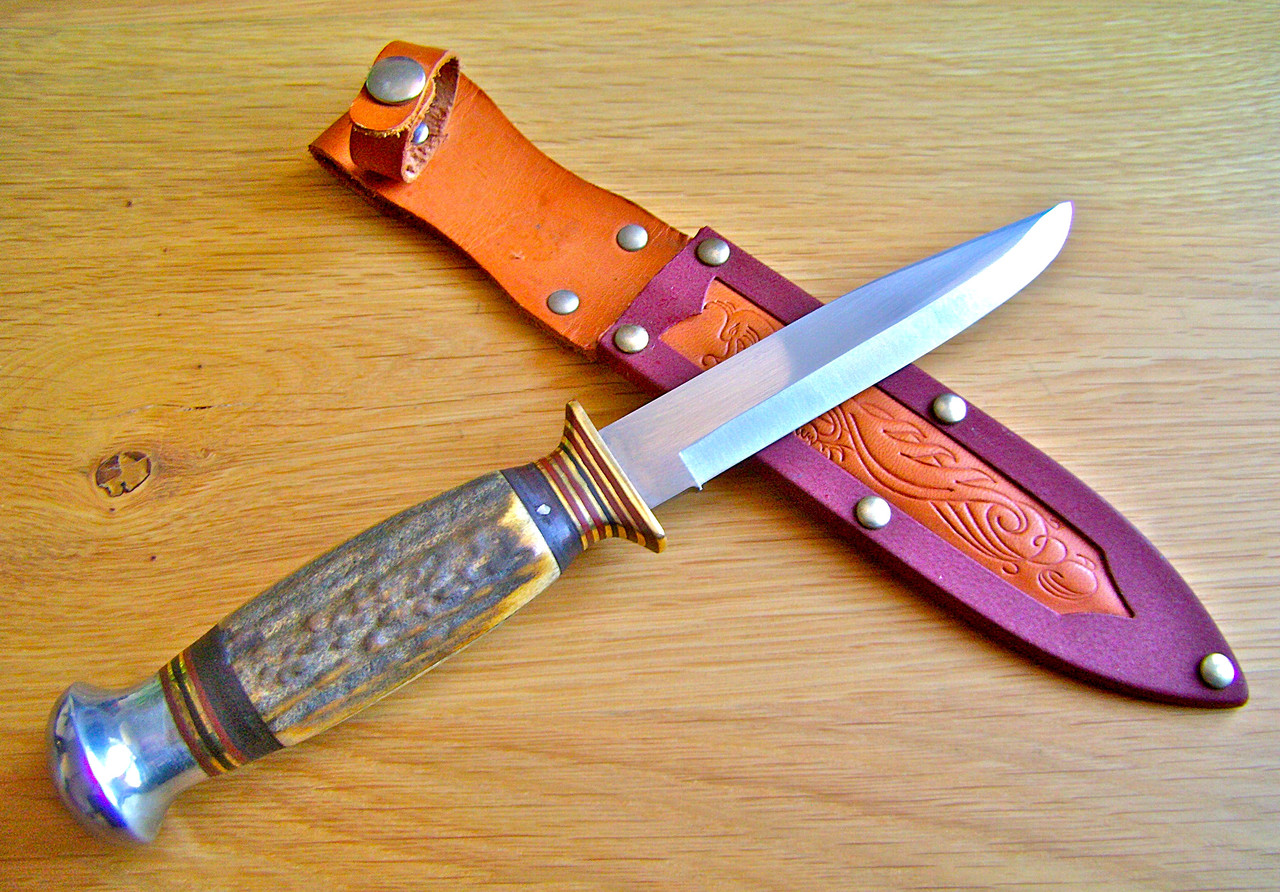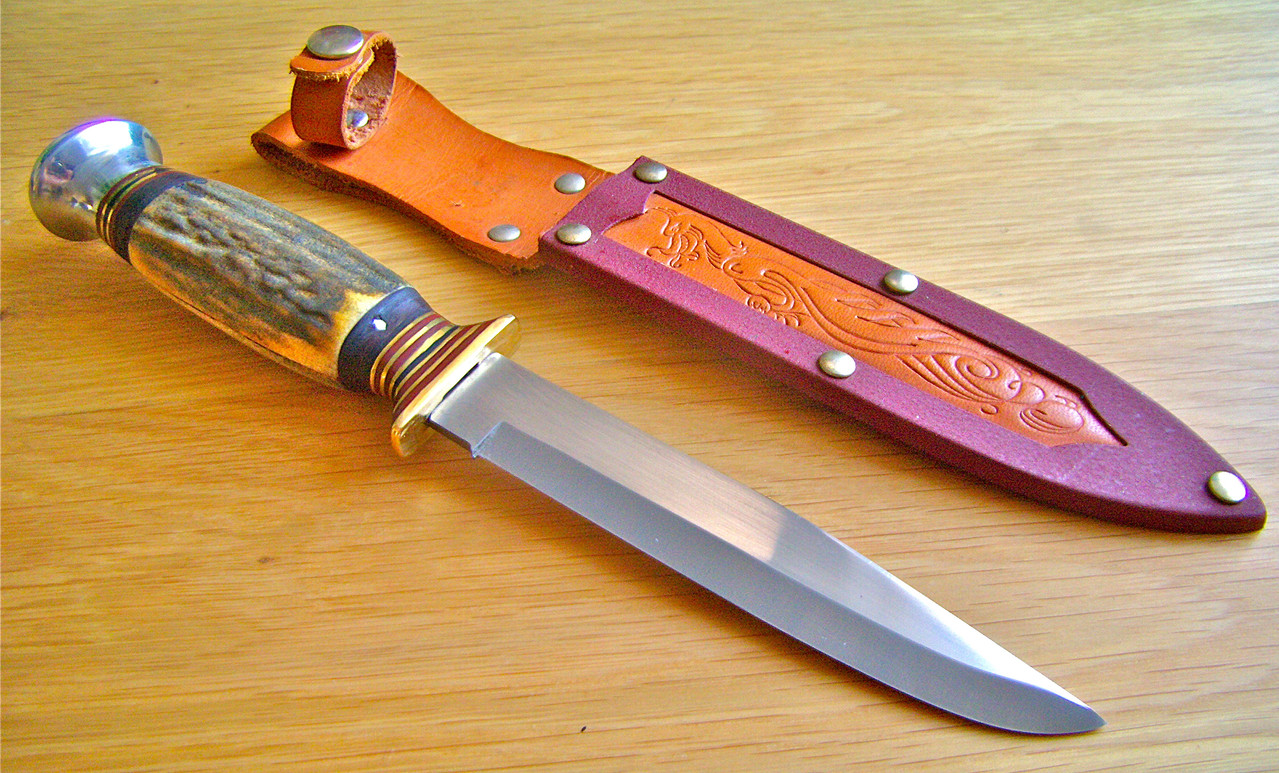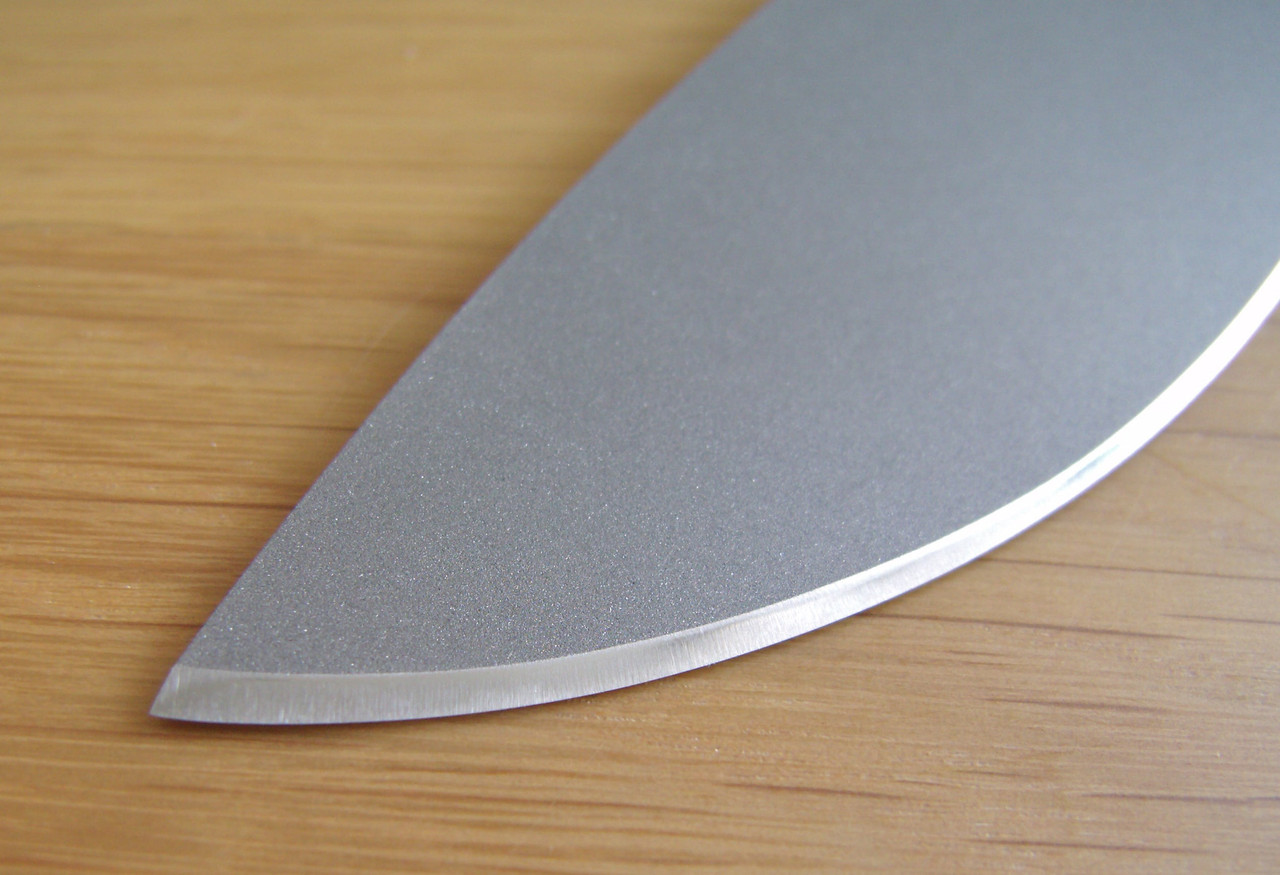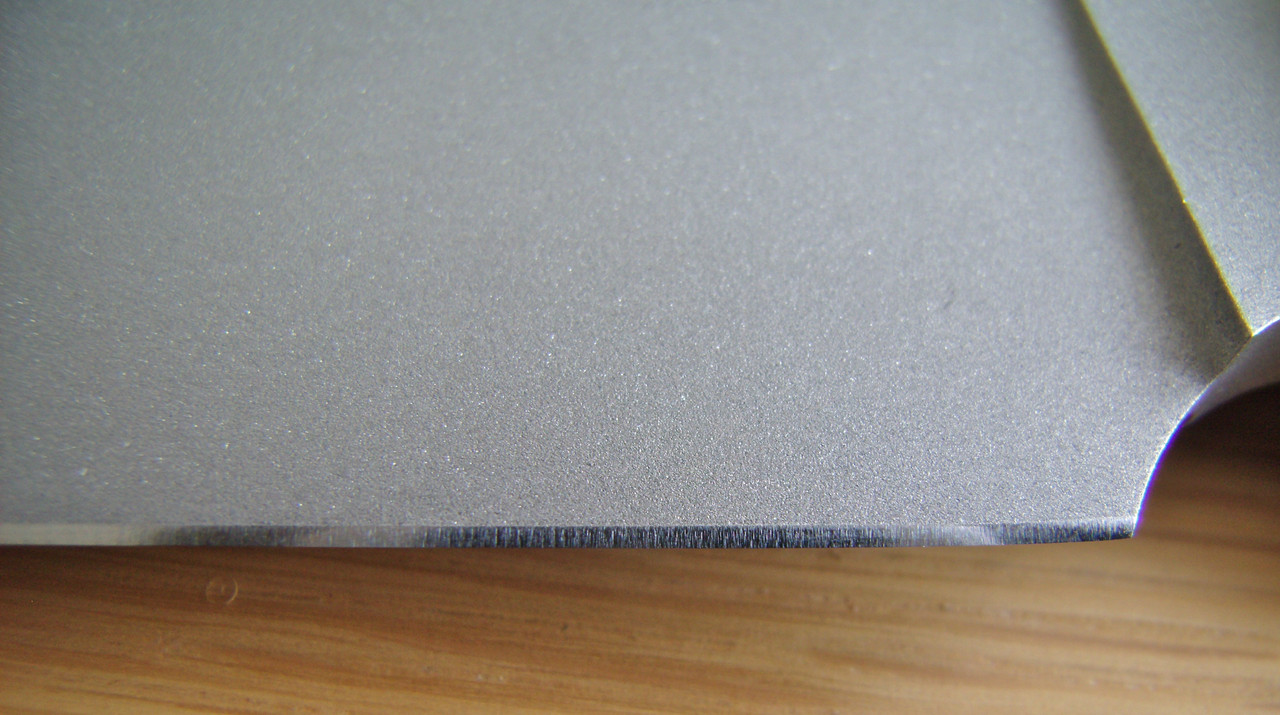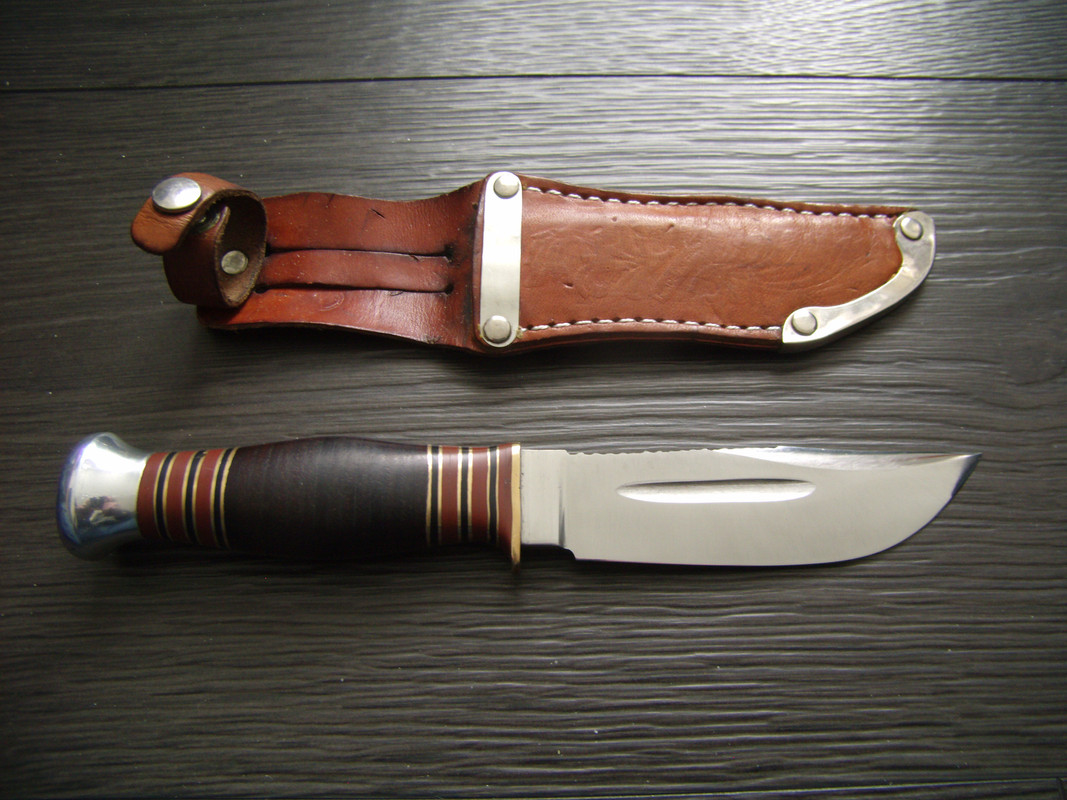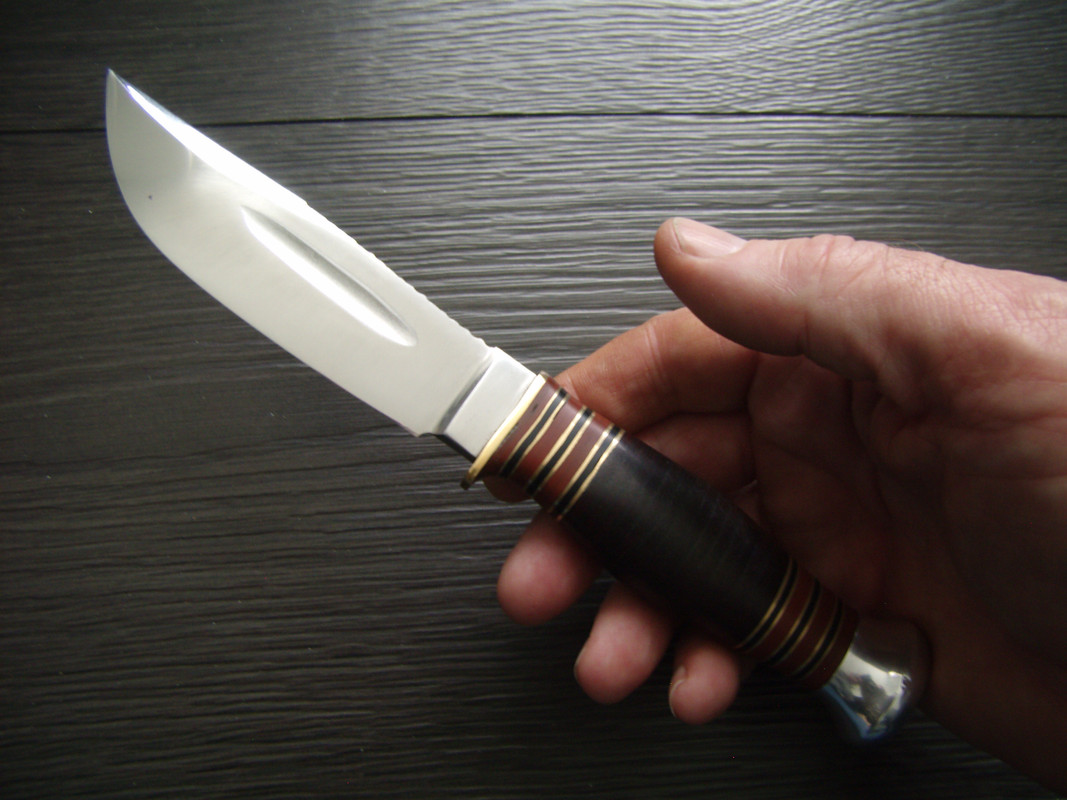In this case no electrolysis or naval yelly was used.
In general (also with this particular knife) i start with sanding the ricasso & back of the (disassembled) blade with 800 grit & WD40, this to see where it gets me.
Often these area's are not too damaged and there is no need to get any coarser, while at the same time it's coarse enough to remove blackness / superficial rust.
In general (also with this particular knife) i start with sanding the ricasso & back of the (disassembled) blade with 800 grit & WD40, this to see where it gets me.
Often these area's are not too damaged and there is no need to get any coarser, while at the same time it's coarse enough to remove blackness / superficial rust.



















